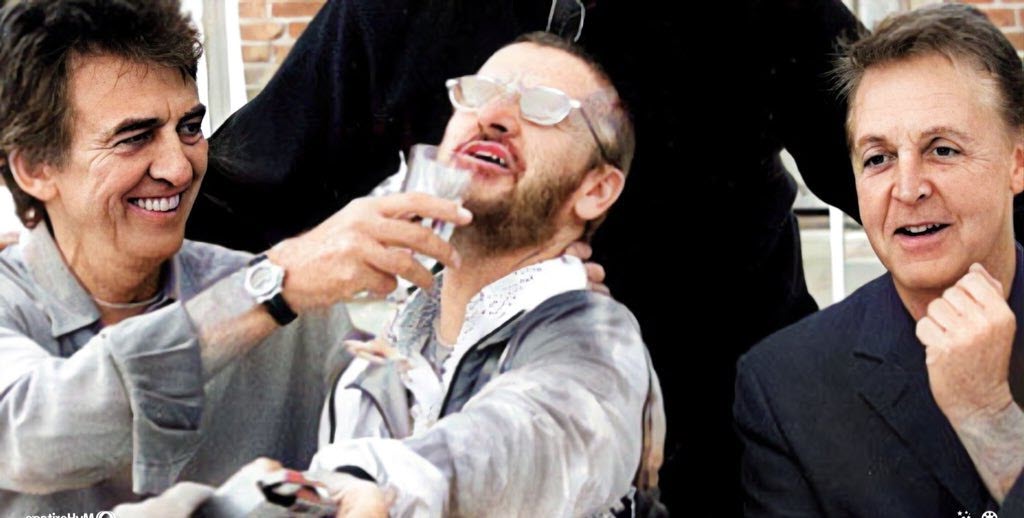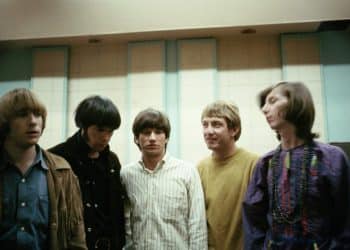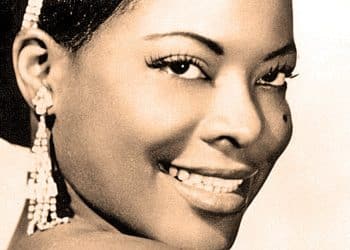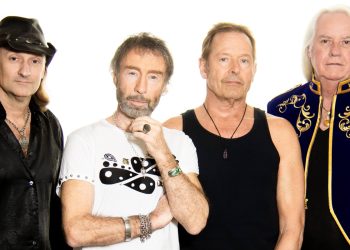Few bands in the history of music have captured the hearts and minds of generations quite like The Beatles. Hailing from Liverpool and taking the world by storm in the 1960s, The Beatles defined not just an era, but an entire cultural revolution. Their music transcended boundaries, blending innovation with raw emotion, and their lyrics spoke to universal human experiences—love, loss, longing, and hope. Even decades after their final performance, their songs remain as iconic and influential as ever, earning The Beatles a permanent place in the annals of music history.
In this article, we dive into the top 10 most popular songs by The Beatles—tracks that continue to top playlists, inspire new artists, and evoke nostalgia for fans both old and new. From the euphoric melodies of “Hey Jude” to the groundbreaking experimentalism of “Strawberry Fields Forever,” these songs showcase the genius of John Lennon, Paul McCartney, George Harrison, and Ringo Starr. Each track tells a story, captures a moment, and sparks feelings that resonate across time. Whether you’re a lifelong fan or a curious newcomer, this list will remind you why The Beatles are, and always will be, the ultimate Fab Four. Get ready to sing along!
1. “Hey Jude” (1968)
Few songs in the history of popular music carry the same emotional weight as Hey Jude. Released as a single in 1968, this seven-minute masterpiece was written primarily by Paul McCartney as a message of comfort and encouragement for John Lennon’s son, Julian, who was struggling with his parents’ divorce. What began as “Hey Jules” evolved into a song that transcended its original inspiration, becoming an anthem of resilience and hope for millions.
From its tender opening piano melody to the soaring crescendo of the legendary “na-na-na” coda, Hey Jude is a slow-burning masterpiece that builds in intensity, inviting listeners to join in its uplifting chorus. McCartney’s heartfelt lyrics reassure the listener to “take a sad song and make it better,” offering a universal message of optimism in the face of hardship.
Upon its release, Hey Jude became an instant classic, topping the charts worldwide and becoming The Beatles’ longest-running No. 1 single in the U.S. Its extended outro, lasting over four minutes, was an unprecedented move for a pop single at the time but became one of its defining features. Decades later, the song continues to unite audiences, proving the enduring power of music to heal and inspire.
2. “Let It Be” (1970)
Released in 1970 during the final chapter of The Beatles’ journey, Let It Be stands as one of the most poignant songs in their catalog. Written by Paul McCartney, the song was inspired by a dream he had of his late mother, Mary, who appeared to him during a time of personal and professional turmoil. Her words of reassurance—“Let it be”—became the foundation for this deeply moving ballad.
Built around a simple yet powerful piano progression, Let It Be exudes a quiet strength. McCartney’s impassioned vocals, paired with the song’s gospel-influenced melody, create a spiritual atmosphere that resonates with listeners on a deeply personal level. Whether interpreted as a message of faith, perseverance, or acceptance, the song has become a source of comfort for those facing adversity.
Despite the tension within the band at the time, Let It Be remains a testament to The Beatles’ ability to create music that feels timeless. The track served as the title song of their final studio album, released just before their breakup, making it an emotional farewell to one of the most influential bands in history. Today, Let It Be continues to inspire and console people across generations.
3. “Yesterday” (1965)
One of the most beloved songs ever written, Yesterday is a masterpiece of simplicity and melancholy. Released in 1965 on Help!, the song was composed solely by Paul McCartney, who famously dreamt the melody before setting it to lyrics. Unlike the electric, energetic sound that had defined The Beatles’ early work, Yesterday introduced a softer, more introspective side of the band.
With its delicate acoustic guitar and sweeping string arrangement, Yesterday captures the essence of longing and regret. The lyrics tell the story of a man reflecting on a love that has slipped away, leaving him yearning for a time before everything changed. McCartney’s vulnerable vocal delivery adds to the song’s emotional depth, making it universally relatable.
Yesterday holds the distinction of being one of the most covered songs in history, recorded by hundreds of artists across multiple genres. Its enduring appeal lies in its ability to evoke deep emotions with just a few simple chords and heartfelt words. Over half a century later, Yesterday remains a shining example of timeless songwriting and emotional storytelling.
4. “Come Together” (1969)
Few songs capture The Beatles’ late-era experimental style as well as Come Together. Released on Abbey Road in 1969, the song was written primarily by John Lennon and was originally conceived as a campaign anthem for Timothy Leary’s run for governor of California. However, it quickly evolved into something far more intriguing—a psychedelic blues-rock track that oozes mystery and coolness.
From the moment Paul McCartney’s hypnotic bassline kicks in, Come Together establishes a moody, laid-back groove. Lennon’s slurred, almost whispered vocals add to the song’s enigmatic feel, while his cryptic lyrics—filled with surreal imagery—invite endless speculation. Lines like “He got toe jam football / He got monkey finger” may not make literal sense, but they contribute to the song’s offbeat charm.
Despite its abstract nature, Come Together became one of The Beatles’ most recognizable songs. It showcases the band’s ability to blend genres effortlessly, merging rock, blues, and funk into a track that still feels fresh decades later. Whether interpreted as a political statement, a character study, or simply an exercise in coolness, Come Together remains a standout in The Beatles’ legendary discography.
5. “Here Comes the Sun” (1969)
A song that radiates warmth and optimism, Here Comes the Sun stands as one of George Harrison’s finest contributions to The Beatles’ catalog. Released on Abbey Road in 1969, the track was born out of a moment of personal relief. Overwhelmed by the business pressures of The Beatles, Harrison found solace in the home of his friend Eric Clapton, where he wrote the song while basking in the arrival of spring.
From the opening acoustic guitar riff, Here Comes the Sun exudes a sense of renewal and joy. The melody, gentle yet uplifting, mirrors the song’s theme of moving out of darkness and into the light. Harrison’s lyrics are simple yet profound, expressing gratitude for the changing seasons as a metaphor for better days ahead.
Unlike many Beatles songs dominated by the Lennon-McCartney partnership, Here Comes the Sun showcases Harrison’s ability to craft melodies that feel both personal and universal. The song’s use of Moog synthesizer, an innovative touch at the time, adds a dreamy texture to its arrangement. Today, Here Comes the Sun remains one of the most streamed and beloved Beatles songs, a reminder that even after the darkest winters, the sun always rises again.
6. “A Hard Day’s Night” (1964)
The sound of a generation bursting into life, A Hard Day’s Night perfectly encapsulates the excitement and energy of Beatlemania. Released in 1964 as the title track for both the album and the band’s first feature film, the song was written in a whirlwind session by John Lennon, with input from Paul McCartney. The title itself came from drummer Ringo Starr, who inadvertently coined the phrase after a long day of work.
Right from the opening chord—one of the most famous in rock history—the song grabs the listener’s attention. The driving rhythm, paired with Lennon’s urgent vocals, captures the feeling of working tirelessly yet finding joy in returning to a loved one. McCartney’s harmony vocals add to the infectious energy, creating a track that is both exhilarating and heartfelt.
A Hard Day’s Night was a defining moment for The Beatles, cementing their status as global superstars. It showcased their ability to craft songs that were both musically sophisticated and instantly accessible. The song remains a shining example of the youthful exuberance that made The Beatles a phenomenon, proving that rock and roll could be both fun and deeply resonant.
7. “I Want to Hold Your Hand” (1963)
A song that changed music history, I Want to Hold Your Hand was The Beatles’ breakthrough in the United States and a catalyst for the British Invasion. Released in 1963, it became the band’s first No. 1 hit in America, sparking a level of fan hysteria never before seen. Written by Lennon and McCartney side by side at a piano, the song captures the innocent excitement of young love with irresistible charm.
From the opening guitar chords to the harmonized chorus, I Want to Hold Your Hand is pure joy. The upbeat tempo, handclaps, and enthusiastic delivery make it nearly impossible not to sing along. Unlike many love songs of the era, it conveys a directness and sincerity that resonated deeply with audiences.
Upon its release, the song topped charts around the world, leading to The Beatles’ famous appearance on The Ed Sullivan Show in 1964, which introduced them to millions of American fans. While The Beatles would go on to write more complex and introspective music, I Want to Hold Your Hand remains a snapshot of the band at their most youthful and exuberant—a song that still brings a smile to faces nearly six decades later.
8. “Something” (1969)
Widely regarded as one of the greatest love songs ever written, Something was George Harrison’s moment to shine as a songwriter. Released on Abbey Road in 1969, the song was a breakthrough for Harrison, proving that he could craft songs as powerful and enduring as those of Lennon and McCartney.
From the first few notes of its unmistakable guitar intro, Something feels timeless. The melody is tender yet deeply emotional, perfectly complementing Harrison’s poetic lyrics about love, devotion, and mystery. Lines like “Something in the way she moves / Attracts me like no other lover” carry a quiet intensity, making the song feel deeply personal yet universal.
Something was praised by legends like Frank Sinatra, who called it “the greatest love song of the past 50 years.” It became The Beatles’ second-most covered song after Yesterday, with artists like Elvis Presley and Eric Clapton offering their own renditions. More than just a love song, Something represents Harrison stepping into his own as a world-class songwriter, proving that The Beatles had more than two geniuses in their ranks.
9. “All You Need Is Love” (1967)
Few songs encapsulate the spirit of the 1960s like All You Need Is Love. Released in 1967, the song was written by John Lennon as a message of unity and peace during a time of social and political upheaval. The Beatles performed it live for the Our World television special, the first-ever global satellite broadcast, reaching an estimated 400 million viewers.
Built around a simple yet powerful message, All You Need Is Love combines anthemic lyrics with an eclectic musical arrangement. The song opens with a snippet of the French national anthem and later weaves in elements of classical music and jazz, reflecting the era’s experimental spirit. The chorus, with its singalong quality, became a rallying cry for the counterculture movement.
Beyond its cultural significance, All You Need Is Love remains a beautifully crafted song, blending Lennon’s laid-back vocal delivery with intricate orchestration. The song’s message—that love is the answer to life’s challenges—still resonates today. In a world that often feels divided, All You Need Is Love continues to be a beacon of hope, reminding us of the power of music to bring people together.
10. “Help!” (1965)
Behind its upbeat tempo and catchy melody, Help! is one of The Beatles’ most personal and introspective songs. Written primarily by John Lennon, the song served as the title track for their 1965 album and film. While it sounds like a high-energy rock song, the lyrics reveal a deeper struggle—Lennon later admitted that he was genuinely crying out for help during this period of immense fame and pressure.
The song opens with an urgent plea: “Help! I need somebody / Help! Not just anybody,” immediately setting a different tone from the band’s earlier love songs. The lyrics express a sense of vulnerability and longing for support, a stark contrast to the carefree image The Beatles projected at the time.
Despite its serious themes, Help! remains an irresistibly catchy song. The tight harmonies, driving rhythm, and enthusiastic delivery make it a standout in The Beatles’ mid-60s era. It marked a turning point in their songwriting, signaling their transition from straightforward pop hits to more introspective and sophisticated compositions. Help! is a reminder that even in the brightest of moments, there can be an underlying struggle—a sentiment that makes the song as relatable today as it was upon its release.







